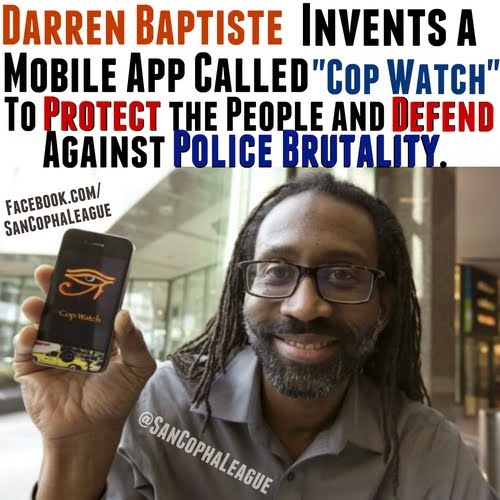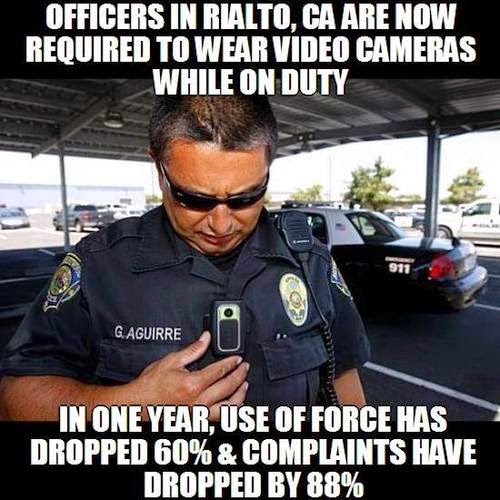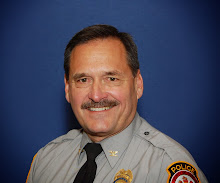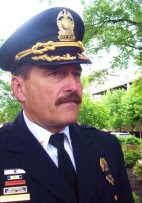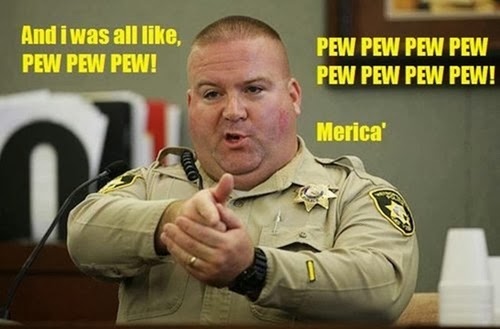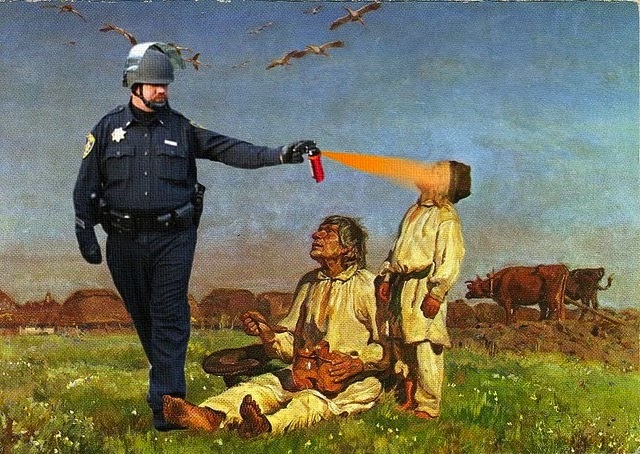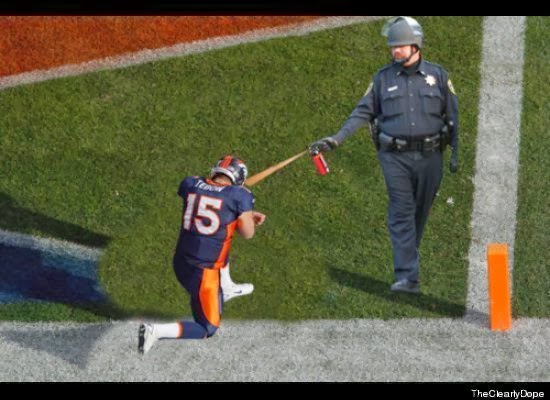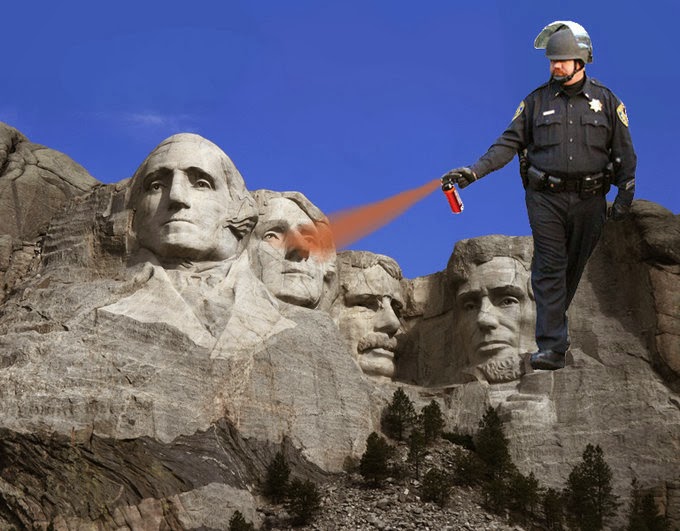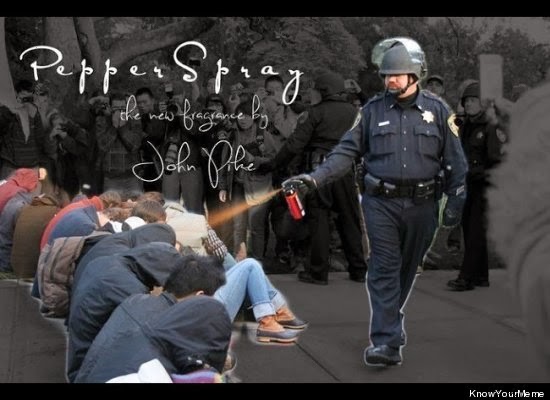THE MURDER
It started on April 15, 1994 at about 2:00 PM. word reached Kansas City, Kansas drug lord Aaron Robinson that two junkies he was looking for, cousins Donald Ewing and Doniel Quinn, were sitting in a parked car on Hutchings Street smoking crack, crack that Robinson was sure they had stolen from him. Robinson dispatched his primary enforcer a 16-year old named Neil Edgar Jr, known on the streets as Monster, to handle the situation.
Cecil Brooks, a drug lord and cousin to Aaron Robinson, said “I personally taught Aaron the drug business. He listened carefully and learned very quickly. Aaron started out on Delavan with me, and then he broke out on his own. I told Aaron how to get his own spot. I mentored him and taught him what I knew. Aaron learned quickly. It got so that he was even better at it than me, or certainly just as good, Aaron was a natural at business. Aaron and I had a tremendous love and respect for each other.
Although Aaron and I were tight, he ran his own operation. He was good to his subordinates and associates. He never cheated and gave everyone their fair share. Aaron had a number of little cats working for him.
A man whose street name was Monster was one of those cats. Monster was about 15 or 16 years old. Monster was the kind of person who would do anything, and he loved my cousin Aaron. He would do whatever Aaron wanted him to do. People close to me told me about the wild things Monster used to do and how crazy Monster was in doing so many murders. I know of two murders that he did - the two Quinns and this white guy. Monster killed a white man over missing dope. To my knowledge, that murder is still unsolved. The victim's body disappeared and, to my knowledge, was never found. This happened sometime in the mid-1990s.
Once Monster started acting out he would then live up to his reputation and image and would do what others expected him to do. He was a 15-year-old kid who somehow got molded into what his name meant - a monster, I told Monster one time that he needed a hug. By this, I meant that he needed some love.
Monster, wearing hair braids, dressed in black, got out of the car carrying a pump shotgun got out of the car and cut across a parking lot and came up on the side of the passenger’s side of the car and unloaded the shotgun into the two men and then ran back across the lot and disappeared. Doniel Quinn who was sitting in the passenger seat died immediately. Donald Ewing was seated in the driver’s seat was pronounced dead later that afternoon at the hospital.
“Monster got paid to do the murder.” Cecil A. Brooks said “He didn't get the whole ticket. He got $500, and the rest was due him but was never paid. Monster did the murders. I know Monster did it because Aaron told me Monster was the shooter.”
Monster knew that Aaron wanted Doniel to pay for breaking into the stash house and stealing drugs." A witness later told investigator sent to reexamine the case "Monster was the one who shot and killed Doniel and the other Quinn .... Monster was a crazy kid. He knew the victims were sitting around in the area. It didn't matter to him if there were people who saw him shoot in broad daylight.
Another witness, a woman who spent a great deal of time with Monster in the months after the murders, recalled him as being a controlling, manipulative and violent man with extreme mood swings. “Monster always carried a gun, usually tucked in his waistband, and everyone knew he was prepared to use it."
Monster essentially confessed to the young woman that he stole the money and drugs from Aaron's drug spot and then pinned the crime on the Quinn boys and “also made clear to her that he had "taken care of' Aaron's problem by killing the Quinns. “
THE INVESTIGATION
A few hours after the shooting the police in expectedly arrested a 17 year old named Lamonte McIntyre for the murders of Doniel Quinn and Don Ewing. The arrest was groundless, McIntyre was miles away from the scene when the murders happened, and he could prove it. He didn’t know anyone involved in the incident. McIntyre had spent the day with two aunts who lived in adjacent houses, a mile away from the crime site, and then went to a restaurant with his mother later in the day.
“When the wrong guy got arrested” Cecil A. Brooks said “We all knew that Monster did what the other guy was arrested for. The guy who got convicted for these murders had nothing to do with it. None of us had ever heard of him. Maybe we should have stepped up and done something, but that wasn’t how it worked.”
The murder investigation conducted by the police was sloppy and lazy and illegal on several front. As an example, ejected gunshot shells were recovered from the scene of the crime in 1994 but were never examined for fingerprints. The police never sought to examine his clothing, despite witness statements that the gunman was standing right next to the car when the shots were fired and likely would have been hit by exploding glass and possibly blood.
An affidavit from the former Kansas City, Kansas, police captain Randy Eskina called his department’s investigation into the crime “Grossly deficient.” It was “unusually brief and superficial and was characterized by multiple errors, failures and deviations from accepted police practices” and that the investigations deficiencies “span several categories, resulting in the reaching of premature and unsupported investigative conclusions” so that “potentially valuable evidence was never gathered, and the entirety of the State’s case rested on two dubious eyewitnesses whose accounts were filled with discrepancies.”
Ronald Singer, a forensic scientist with the Tarrant County (Texas) Medical Examiner’s Office testified that investigators didn’t test McIntyre’s clothes for glass or blood from the crime scene or search his home for the shotgun used in the crime. They also made no attempt to find a link that would put McIntyre at the scene. They also ignored many people who told them they had the wrong man.
“In my opinion” Singer said “because Mr. McIntyre was initially linked to the scene only through eyewitness testimony, it was essential that a thorough evaluation of physical evidence available be conducted in order to support or refute the eyewitness testimony. Failure to do so potentially hampered Mr. McIntyre’s ability to prepare an adequate defense.”
The investigating detective, Roger Golubski, knew the accused Lamonte McIntyre’s mother, Rose McIntyre. According to Mrs. McIntyre, in the late 1980s Golubski coerced her into a sexual act in his office and then harassed her for weeks, often calling her two or three times a day, before she moved and changed her phone number. “He had total power, and I was terrified that he would try to force me again to provide sexual favors. I also knew that there was no one I could complain to, as Golubski was known to be very powerful in the community and in the police department.”
At least four people witnessed the brazen daylight shooting. Two of them wrongly identified Lamonte McIntyre, from a photo lineup, as the shooter. But here’s why. Police detective Roger Golubski and a second Kansas City, Kansas detective returned to the crime scene the following day to show residents the same five photographs. Three of those photos were of Lamonte McIntyre, his brother and his cousin, all three men shared a basic family similarity.
Witness Ruby Mitchell: Mitchell gave a series of contradictory identifications and descriptions to the police. She had been standing at her front door and saw the shooter walk down the hill toward the victims’ parked car carrying a short, brown handled shotgun, which was true. She said he wore all black clothing, which was true, and his hair was slicked back, which is not true he wore braids. She said saw him pump the gun and shoot into the car then he walked back up the hill. When asked “Did you see his face?’ she said “Well, he’s brown skinned, that’s all I could tell.” Although the interview was part of the official record, that statement “He’s brown skinned” was never referenced at trial.
Later that same day, Mitchell contacted police to say that she knew who the shooter was, a young man named Lamonte (Meaning the otherwise innocent Lamonte McIntyre) but she had no last name. She recalled that she had met him before, through her niece. However the Lamonte she had met was a young man named Lamonte Drain, not Lamonte McIntyre.
Det. Golubski picked up Mitchel a short while later and drove her to the police station to assist in creating a composite likeness of the shooter. After creating the composite, she identified the shooter from an array of five photos, consisting of Lamonte McIntyre, a photo of his brother, a photo of his cousin, and two photos of other young black men. The array did not include a photo of Lamonte Drain, the Lamonte who Ruby knew through his contact with her niece and had originally told police that she recognized as the shooter.
Later, Ruby reported that as Golubski had driven her to the station on the day of the murder he made her very uncomfortable, telling her she was pretty, that he enjoyed black women and asked if she dated white men. She said that the remarks made her highly uncomfortable because she knew Golubski’s reputation for intimidating black women to elicit sexual acts under threat of arrest.
Golubski, behavior was known throughout the Department. His reputation for allegedly taking care of warrants and tickets for black prostitutes, if they provided sexual favors, was also known. Many people in the community saw Golubski in the company of prostitutes and reported that he rode around in his police car with them. Witnesses eventually came forward to say his behavior and reputation caused them to lie or withhold exculpatory information.
Golubski was so involved with black female prostitutes and drug addicts that he fathered children with some of them, according to an affidavit from retired police officer Ruby Ellington who said “Roger Golubski’s involvement with them was no secret. It was simply accepted as part of what Roger Golubski was able to do without repercussion.”
Cecil Brooks, the dope peddler, recalled Golubski and said that, “On at least two occasions, I personally witnessed Detective Golubski confiscate drugs from someone and not arrest that person. Once in about 1990 a young kid named Lamont Washington and I emerged from a dope house. Golubski confronted us outside the house. He took $600 to $700 worth of cocaine that was on Lamont, and then let him go without arresting him. Golubski did the same thing at a later date when Henry Williams and I came out of a drug smoker's house. Golubski took Henry's drugs and let him go. In both instances, Golubski never searched me for drugs. He knew I never carried them on my person. We all knew that Golubski would take drugs and then give them to drug-addicted black hookers in exchange for sexual favors.” However he was never called onto the carpet for his supposed behavior, in fact, he rose through the ranks and became a captain.
Witness Josephine Quinn: Quinn lived directly across the street from the crime scene. She was an aunt to both of the victims. She and her daughter Stacy were both home and witnessed the shooting. Josephine heard three or four shots as she walked out her front door then she saw the murderer pump his gun, shoot two more times, and run away. Her daughter, Stacy ran out of the house just before the shooting because she heard her mother and uncle arguing. When she stepped outside she saw them, her mother and uncle, in the middle of the street and saw the shooter approaching the parked car that held Donald Ewing and Doniel Quinn. Stacy shouted at her mother to get down. After Monster shot out the windows, Stacy saw that her cousin, Doniel Quinn, (Donald Ewing was also her cousin) was in the car and screamed to her mother “It’s little Don,” then ran to the car while her mother called the police. The next day, Detective Golubski showed Josephine the 5 photo line-up, but she could not identify anyone in it as the shooter. She did tell Golubski that her daughter knew the shooter. Josephine Quinn said that she could not make an identification, because she was up Hutchings Street and did “not get a good look” at the shooter.
Niko Quinn. Lived three doors down from Josephine, who was her mother. Police interviewed Niko Quinn three times. A Detective Smith first interviewed her at 2:46pm the day of the murders. She reported that she had seen the killer dressed in black, with a shotgun in his hand, walk towards the victims’ parked car, shoot the victims then walk back up the hill toward Hiawatha Street. She was standing at a tree between Ruby Mitchell’s house and a vacant lot when she saw the crime. She had been on her way to her mother’s house, just past Ruby Mitchell’s house. She said that she could recognize him if she saw him again. Then Golubski interviewed her. His report describes Niko Quinn as “still visibly traumatized by what had happened.” Seeing the photo spread, he wrote, she “began shaking, became teary eyed, and was very hesitant in making any statements.”
Golubski wrote that Niko Quinn seemed to recognize the photograph of Lamonte McIntyre, the same photograph that her neighbor, Ruby Mitchell, had identified the day before. Golubski wrote that Niko Quinn “put her head down and stated that she thought that this was the individual but was not sure at this time positively. But thought it might be him.” Golubski wrote that Quinn then excused herself, and the interview was concluded.
Sometime later, Niko contacted Golubski saying she needed to meet with him again. She had noticed two men on the vacant lot near her home and worried that they were connected to the murders. Golubski said that he would help her move away and later did. They met at the high school and this time, she identified Lamonte McIntyre’s photo as the shooter.
THE TRIAL
With one positive ID that seemed to have been given in exchange for safety, and a boatload of highly suspicious otherwise weak evidence, 17-year old Lamonte McIntyre was charged with a double homicide.
It’s truly a wonder that the case went to trial at all. The police had no physical evidence connecting McIntyre to the crime. They had not produced a gun, nor conducted a search of McIntyre’s house for either the gun or the black clothing described by the eyewitnesses. Nor did they produce any evidence that McIntyre knew the victims or had a motive to kill them. Five alibi witnesses accounted for McIntyre’s whereabouts prior to, at the time of, and after the murder. Yet, Wyandotte County Assistant District Attorney Terra Morehead told the jury in her opening statement that “numerous reliable sources, people, had indicated that the individual who was responsible for this was the defendant, Lamonte McIntyre.”
Gary W. Long was the attorney appointed to defend McIntyre trial. Long was placed on supervised probation by the Kansas Supreme court shortly after being appointed as McIntyre’s lawyer for errors made in three prior cases. And those errors continued. Long never reconstructed the crime scene and there is some question as to whether he even visited the crime scene. And he should have reconstructed the crime scene because a reinvestigation of the case years later did include a reconstructed the crime scene which raised doubts that Ruby Mitchell could have clearly seen the face of the killer from where she watched the incident through the screened front door.
At a June 1994 hearing in juvenile court that served both to determine whether McIntyre should be tried as an adult and as a preliminary hearing, Niko Quinn and Ruby Mitchell made in-court identifications of McIntyre. At the close of the hearing, the juvenile court judge ruled that probable cause existed, and that McIntyre should be tried as an adult. Long didn’t interview Ruby Mitchell and Niko Quinn. Despite police reports that Stacy Quinn could identify the shooter, Long didn’t interview her either. He later said that he learned after the trial that Stacy Quinn had seen the shooting, meaning he did little or no investigation into the case before he accepted it. Long’s poor representation of clients continued, and he eventually surrendered his license. He was disbarred in 1998.
With no case, the prosecution cheated. It withheld exculpatory information. Wyandotte County District Judge J. Dexter Burdette the presiding judge in the trial, had a romantic relationship with the Terra Morehead, the prosecutor, that neither Morehead or the judge disclosed at the time. So the case came down to the testimony of the two eyewitnesses, Ruby Mitchell and Niko Quinn.
At the trial, Ruby Mitchell testified that she picked out Lamonte McIntyre’s photograph from the photo spread the cops showed her and said she did not know McIntyre’s name when she chose him out of the photo lineup. However in the original tape-recorded interview, she said she had recognized the killer, and said his name was “Lamonte McIntyre.” Remarkably, McIntyre’s lawyer failed to question her about her previous statement.
Both Detective Golubski and Police Lieutenant Dennis O. Barber testified that they had obtained McIntyre’s name from “various sources” but failed to provide specifics.
A retired Kansas City, Kansas police captain, Randy Eskina, who investigated the case wrote in an affidavit that there was “nothing in the file to indicate that these sources did in fact actually exist…..The lack of proper documentation causes me to have grave doubts about the existence or reliability of any informant or tipster who supposedly provided the name of Lamonte McIntyre to the police.”
Stacy Quinn (Josephine Quinn’s daughter) who had the best view of the shooter, did not testify at trial. She was never even interviewed by the police and is was alleged to have had an ongoing sexual relationship with Detective Golubski. Stacy was a questionable witness anyway. She admitted on the stand that she was currently in custody, held on a parole violation following a theft conviction. And she admitted she used drugs, though she said her head was clear the day of the shooting.
Niko Quinn told Assistant District Attorney Morehead that McIntyre was not the shooter when she saw him in the courthouse. According to the Quinn, Morehead threatened her with contempt charges and said she would have Family Services take her child away if she changed her story, so identified McIntyre as the killer. Morehead then committed what are called Brady violations by withholding Josephine Quinn’s evidence from the defense and the court.
Josephine Quinn, went to the court to see if her testimony was needed but Assistant District Attorney Morehead said it wasn’t, however, while in the courthouse, Quinn saw McIntyre. The next day, Quinn called Morehead and told her that McIntyre couldn’t not be the shooter; his skin was to light, he was too short and had a professional haircut. Although Morehead was required to inform the court of Quinn’s statement, dismissed her by saying that the case “is in the jury’s hands now.”
And it was but not for long. In her closing argument, Morehead told the jury that McIntyre, who didn’t know the victims, had a “vendetta” and shot victims to “settle a score,” though no evidence was presented connecting McIntyre to the victims.
The jury deliberated a few hours, then broke until the next day, when they sought to rehear the testimony of the two state’s eyewitnesses, Ruby Mitchell and Niko Quinn. Later that morning, they returned a guilty verdict. In fairness, the jury had wrestled with the conviction. One Juror, Greg Lauber, later said that he was one of the two last jurors to support a guilty verdict, and that he was never completely comfortable with the result.
The mandatory two life sentence handed out to McIntyre, who, again, was only 17 at the time, was later rued to be excessive since it was not individualized with any consideration to his clean record and his age.
MOTION FOR A NEW TRIAL
(April 1996)
On June 6, 1997, Lamont McIntyre filed a post-conviction motion for a new trial contending that his original trial was not fair based on two issues - the district court's failure to give an eyewitness instructions and counsel's failure to present testimony from witnesses Keva Garcia and Willie Bush.
After McIntyre managed to rid of the incompetent Gary W. Long, the court appointed a new lawyer, Mark Sasche, to McIntyre’s case. Josephine Quinn gave Sasche, an affidavit echoing what she had told Prosecutor Morehead. She said she knew Lamonte McIntyre was not the killer because he was too tall, his skin was too dark, and his lips protruded too much. However, Sasche, for whatever reason (if, in fact, there was a reason) failed to communicate with McIntyre prior to the hearing, and once at the hearing, he failed to bring any evidence or witnesses or Quinn’s statement, or, for that matter even Lamont McIntyre, to court on January 16, 1998.
Like Gary Long, at the time Sasche represented McIntyre, Sachse was in trouble over another case he was handling. In that case, he never filed an appeal on behalf of a man he was appointed to represent who was convicted of murder, even when warned the case would be dismissed if he did not respond.
In another case, he ignored discovery requests from the opposing lawyer in a civil case Sachse had filed on behalf of a seven-year old who was injured in a car accident. The case was dismissed when Sachse failed to respond even when ordered to do so by the judge. When the family traveled weeks later for a pretrial hearing, Sachse met them at the courthouse and told them the case had been postponed; he failed to say his neglect had caused the case to be dismissed.
Those two were among seven clients who filed complaints against Sachse; in 2000, the Kansas Supreme Court adopted the findings of the disciplinary panel that Sachse had failed all seven thereby causing harm. The court ordered Sachse to serve supervised probation for two years. Six years later, the Kansas Supreme Court suspended Sachse from practice for a year after he failed to properly represent two more clients. And finally, in 2007, Sachse voluntarily gave up his license and was disbarred after disciplinary proceedings were pending against him in 17 more cases.
Still, despite that incompetence, Stacy Quinn testified at a post-conviction hearing in April of 1996, describing the shooting in detail and saying that Lamonte McIntyre could not be the murderer because he was too tall, his face was too long, and his lips were too big. She described his hairstyle as “French braids” not the style worn by Lamonte McIntyre at the time of the murder. Stacy also testified at the hearing that she had seen the real shooter twice since the murder and McIntyre had been jailed. Although he testimony clearly exonerated McIntyre, Judge Burdette rejected it as not credible. With McIntyre absent, prosecutor Morehead persuaded Judge Burdette not to grant McIntyre's motion for relief.
THE REINVESTIGATION OF THE CASE
Twenty four years passed. The case came to the attention of the New Jersey- based Centurion Ministries, which fights for wrongly convicted prison inmates who are condemned or serving life sentences.
Centurion decided to investigate the case and on an initial review found that there were so many flaws that no reasonable juror would have convicted McIntyre if all of the evidence had been provided to that jury.
On October 12, 2016 an evidentiary hearing on the motion to dismiss was convened in Wyandotte County District Court. Family members of the victims who believed Lamonte McIntyre was innocent were among the first to testify. On the second day of the hearing, Senior District Judge Edward Bouker vacated McIntyre’s conviction. The judge said his action “was to correct a gross injustice” but did he said nothing of the gross misconduct on the part of Burdette, Morehead or Golubski.
McIntyre’s case, along with several others, prompted a new Kansas law, enacted in 2018, requiring the state to compensate victims of wrongful convictions. Under the new statute, McIntyre will receive $65,000 for each of the 23 years he wrongly spent in prison, among other benefits. The court also ordered that records of his conviction and DNA profile be expunged.
McIntyre was released from prison in 2017. In October of 2018, Lamonte filed a federal civil rights suit against Golubski and 8 other police officers. In March 2019, he filed for state compensation for wrongful incarceration.
Metropolitan Community College in Kansas City, Missouri, awarded Lamonte McIntyre a full scholarship to attend college at their Penny Valley Campus. He has since earned an Associate Degree in Business Administration. While in prison, McIntyre learned to barber. He is now part-owner of a barber school he graduated from and has opened a second location in Kansas City, Missouri. He is also a board member of Miracle of Innocence, Lamonte will finish his BA degree in Business Administration in 2019. “Being charged, convicted and sent to prison has been a surreal experience, like a nightmare I can’t wake up from,” McIntyre said in a statement. “It’s hard to believe it happened, and I still struggle with the question of why. I’m all right. I’m happy, you know. I’m here thanking God. I’m thanking everybody who supported me and been here for me. It feels good. I feel good. I’m happy.”
As Saundra Newsom, murder victim Doniel Quinn’s mother, said it best “Let him find a life. Let him be at peace. Let us be at peace.”
Aaron Robinson, the drug dealer who ordered the murders, was killed in March 1996. Monster is currently serving a 33-year sentence in Missouri for murder .
Morehead left the District Attorney’s office on September 12, 2002 and became an Assistant U.S. Attorney for the District of Kansas. She had not faced discipline for her conduct. Golubski rose through the ranks to detective and captain. He retired cement in 2019 last year. Judge Burdette is still on the bench.





